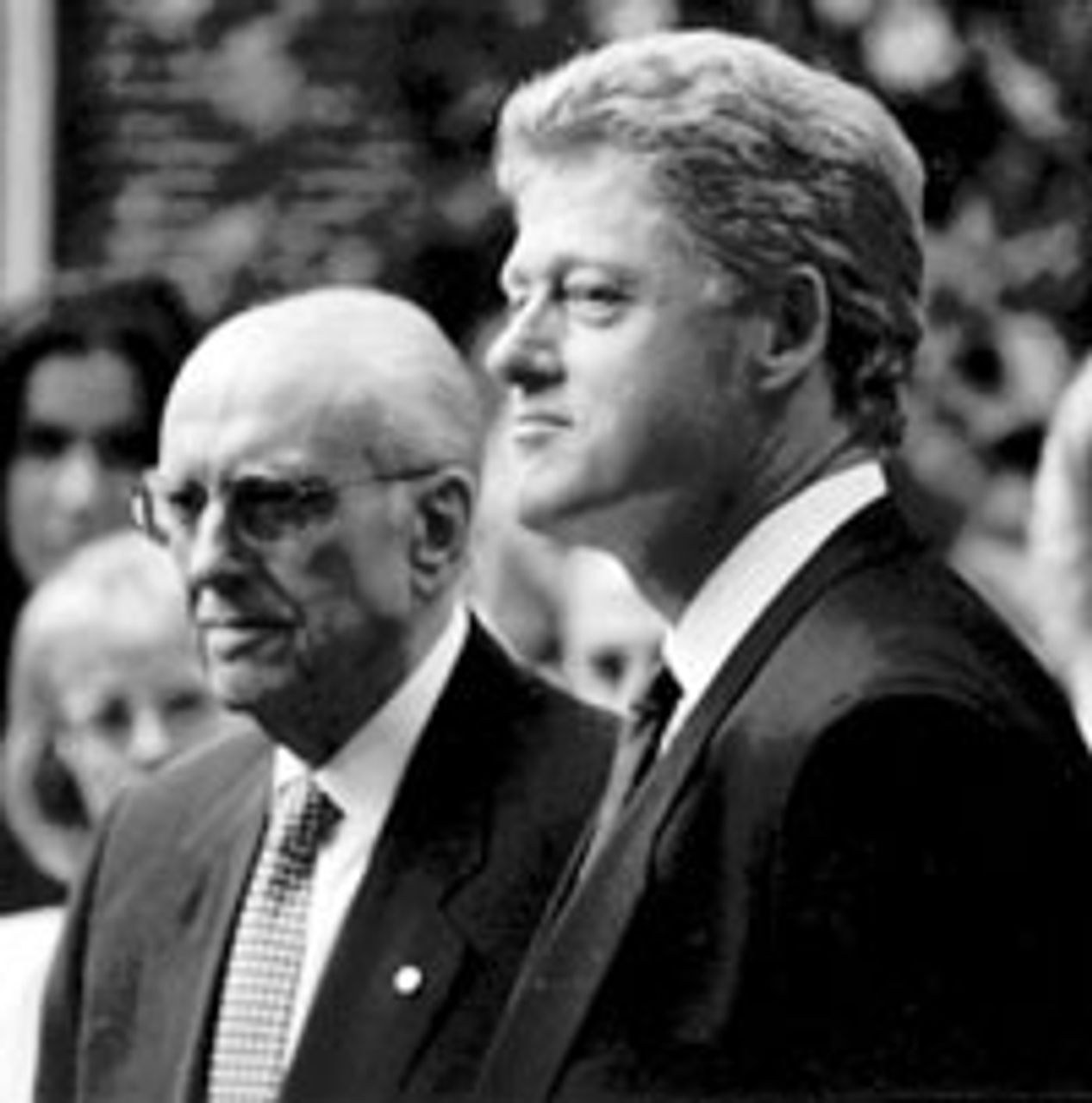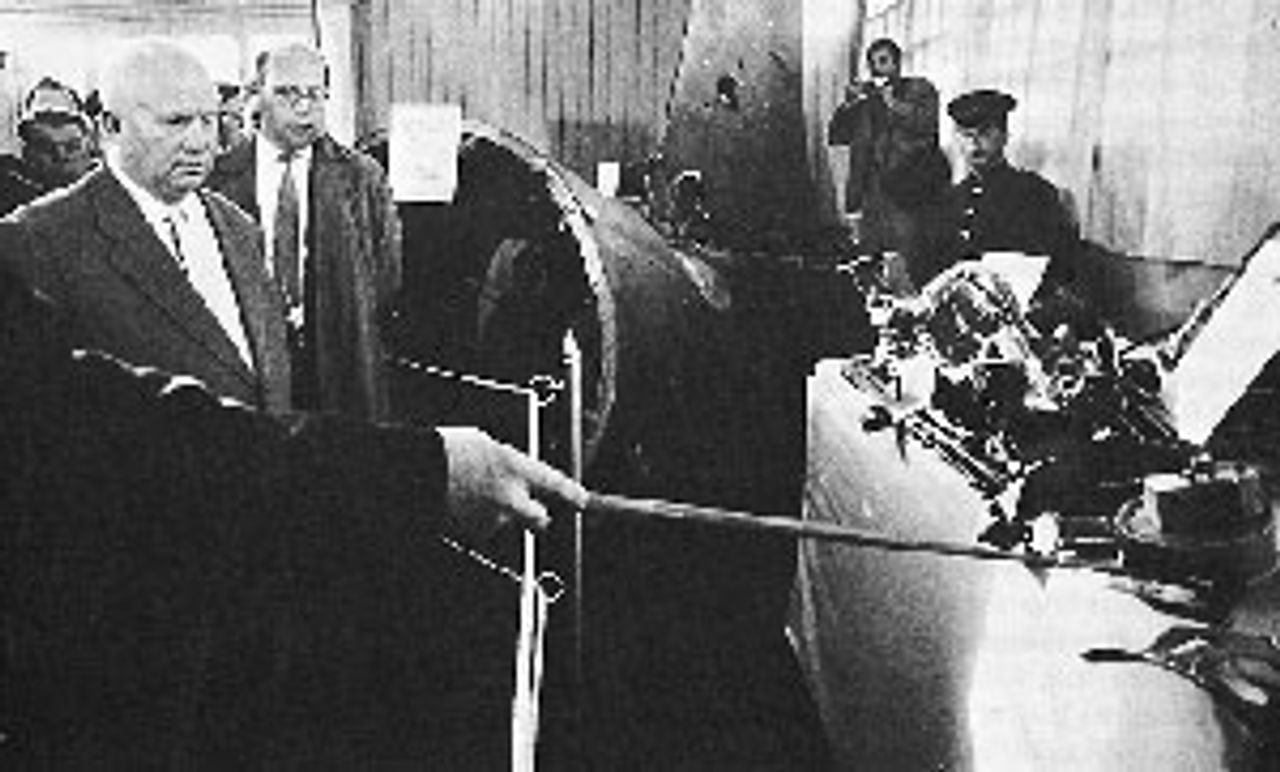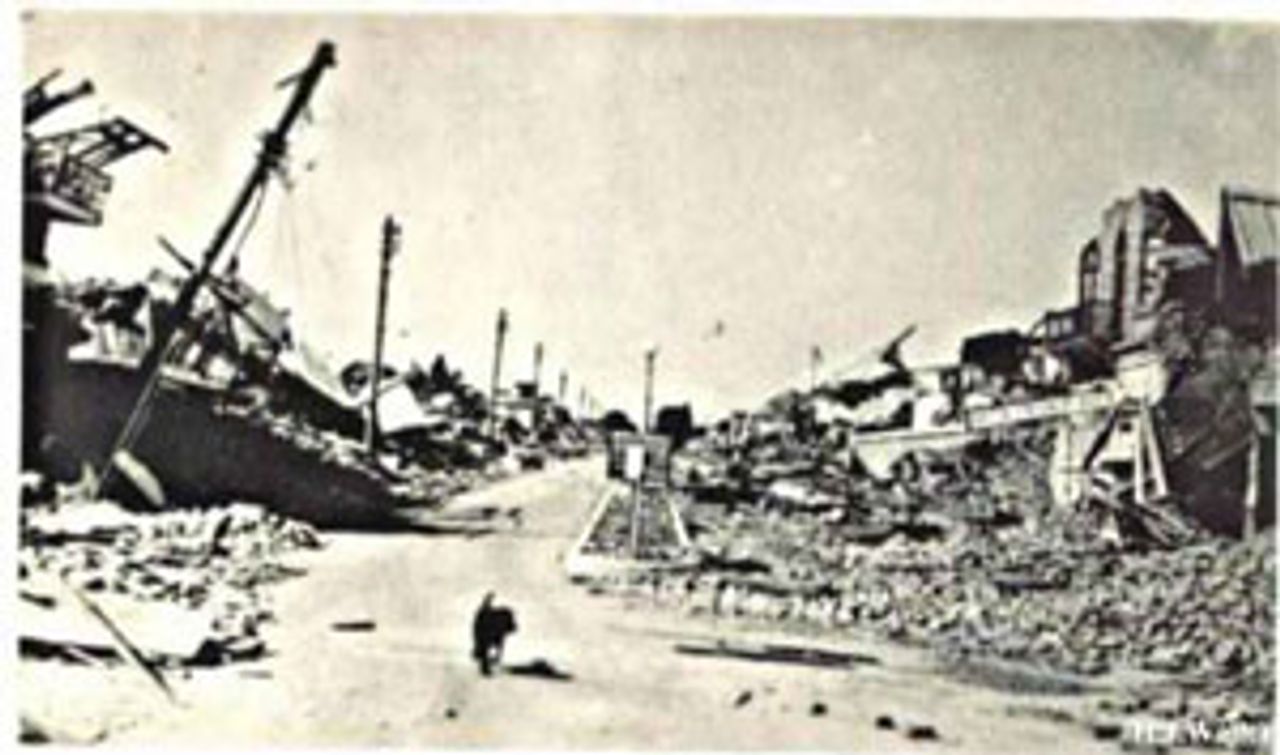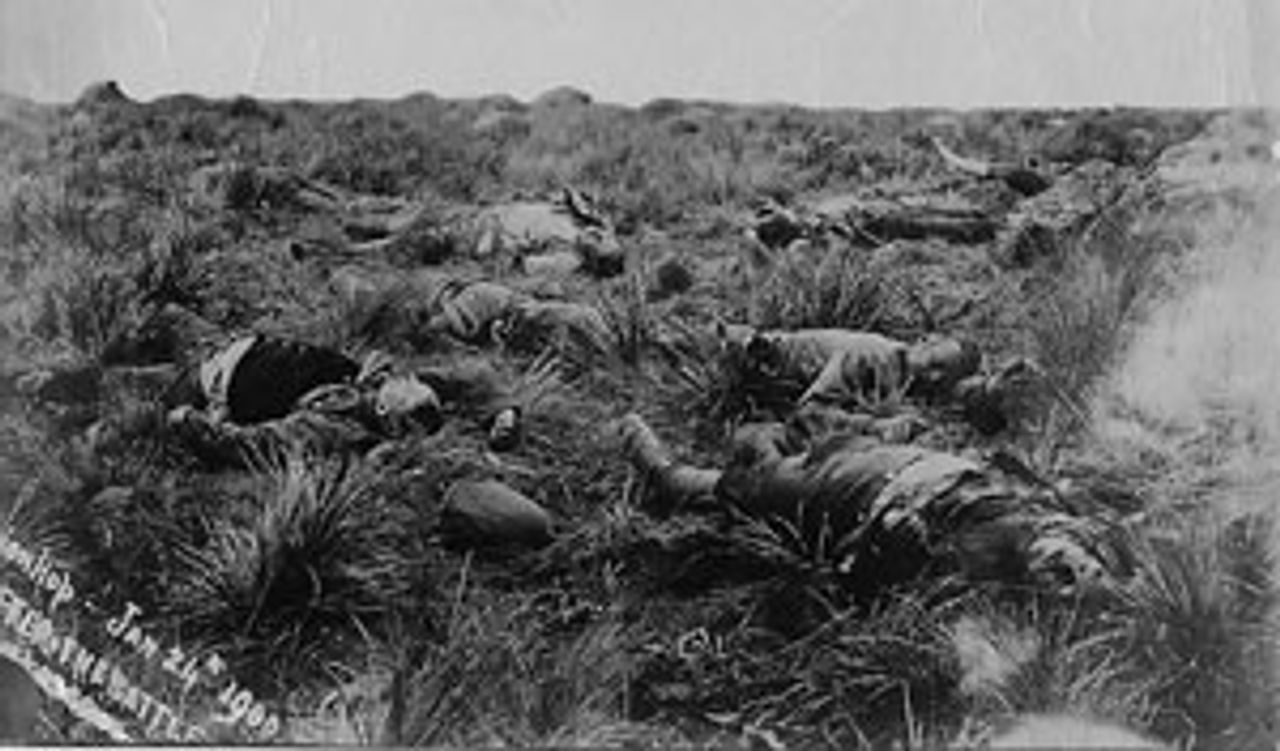This Week in History provides brief synopses of important historical events whose anniversaries fall this week.
25 Years Ago | 50 Years Ago | 75 Years Ago | 100 Years Ago
25 years ago: Papandreou’s PASOK win Greek elections
 Papandreou with Pres. Clinton in 1994
Papandreou with Pres. Clinton in 1994The Panhellenic Socialist Movement (PASOK) won the Greek elections held on June 2, 1985, allowing it to maintain its majority in parliament and Prime Minister Andreas Papandreou to form a government. PASOK won 46.35 percent of the vote compared to the right-wing New Democratic Party’s (NDP) 40.7 percent, in an election widely viewed as more of a repudiation of elements in the Greek ruling class who favored a return to dictatorship than a victory for Papandreou. The ultra-Stalinist Communist Party of Greece won most of the remainder of the vote.
The three-week election campaign played out in an atmosphere of considerable tension. The majority of the Greek population feared a return of the NDP, which openly campaigned for Greece to be more subordinate to US foreign policy. Papandreou downplayed foreign policy in his campaign. He had not delivered on his 1981 election promise to withdraw Greece from NATO. However, the Prime Minister said he would close down the three US military installations in Greece.
In spite of its socialist pretensions, PASOK offered no solution to Greece’s economic crisis, which was characterized by 10 percent unemployment, sharp inflation, extremely low wages relative to the rest of the EU, and an increasingly dispossessed peasantry.
Papandreou was considered a technocrat. He had earned his PhD in economics at Harvard and become a US citizen. After this, he held positions at a number of US universities, including the University of California, Berkeley and the University of Minnesota, where he met his American wife. Papandreou was recruited back to Greece in 1960 by right-wing president Konstantinos Karamanlis. He rose to minister of economics in 1963 under the government of his father, George Papandreou. He lived abroad during the 1967-1974 military junta, which he blamed on the US Central Intelligence Agency (CIA). Papandreou was the father of the current Greek prime minister, also named George Papandreou.
50 years ago: U-2 incident reveals US provocations against Soviet Union
 Kruschev inpsects wreckage of U-2 spy plane
Kruschev inpsects wreckage of U-2 spy planeCongressional inquiries into the U-2 incident continued this week in 1960, with Dr. Hugh L. Dryden, head of the National Aeronautics and Space Administration (NASA), giving largely secret testimony before the Senate Foreign Relations Committee on NASA’s role in the spy plane incident and its cover-up. NASA, by law, was to serve only peaceful purposes.
The Central Intelligence Agency’s (CIA) U-2 reconnaissance planes, which had been operating missions since 1956, were designed to fly at altitudes of about 70,000 feet. Tasked with photographing Soviet military installations, they could not be reached by Soviet air defenses at this elevation. In response, the Soviets worked on creating surface missiles and jets that could reach the U-2.
On May 1, a U-2 launched from Peshawar, Pakistan was forced from the sky either by being rammed by another plane or by a surface-to-air missile strike, after completing most of its mission. To cover up the loss of the jet, NASA and the Eisenhower administration declared on May 4 that a plane on a scientific mission had been lost north of Turkey. To bolster the claim, they even painted a U-2 in NASA colors.
Soviet Premier Nikita Khruschev then laid a trap for Washington by declaring that the Soviets had shot down a spy plane. Washington responded by declaring that this was likely the case, but that the plane had been on a peaceful mission. What Khruschev had not revealed was that both the plane and the pilot had survived. Francis Gary Powers had parachuted to safety but had failed to press the plane’s self-destruct button and had not taken his suicide pill, as he had been ordered to do. When Khruschev revealed that Moscow had both Powers and the U-2, Eisenhower was compelled to admit the US had violated Soviet airspace for the purpose of espionage and had attempted to cover it up.
Coming 15 days before a major East-West summit in Paris, the U-2 incident and the failed cover-up were a major embarrassment for Washington. However, the administration refused Khruschev’s demand for an apology. In response, the Soviet leader stormed out of the Paris conference. The U-2 incident stoked Cold War tensions, with Khruschev quickly announcing a diplomatic visit to Cuba 18 months after the pro-US regime of Fulgencio Batista had been toppled by Fidel Castro’s nationalist revolution.
75 years ago: Massive earthquake strikes Pakistan
 Quetta eartquake
Quetta eartquakeOn the morning of May 31, 1935, a 7.7 magnitude earthquake struck the town of Quetta, located in Baluchistan, Pakistan. Between 40,000 and 60,000 people were believed to have been killed during the disaster, with thousands more injured.
By 1935, Quetta had become a busy commercial center and railway hub, and an important military stronghold for Britain due to its location near the border of Afghanistan. Virtually every building in this important city, including those of the Royal Air Force base, was completely toppled by the quake. Compounding the destruction and the high death toll were the lack of building codes, the close proximity of structures to one another, and the extreme narrowness of many streets. Surrounding villages, including, Kalat and Mastung, were also wiped out. The effects of the earthquake were reportedly felt as far away as Karachi, Agra, India, and Kandahar, Afghanistan.
Recovery efforts were carried out by British troops. Quetta was placed under martial law and no one was permitted entrance into the city. British forces were given the authority to shoot so-called looters on sight. A massive tent city was constructed to provide shelter for the thousands left homeless by the quake. Many of the city’s dead were buried in trenches dug by British soldiers.
100 years ago: British dominion of South Africa founded
 British dead on South African battlefield, 1900
British dead on South African battlefield, 1900 On May 31, 1910, the former Boer republics of the Transvaal and the Orange Free State joined with the Cape and Natal colonies to form the Union of South Africa, a British dominion. Unity between Boers and English settlers, formerly bitter rivals, was secured based on the disenfranchisement of black Africans.
The British effort to assert full control over South Africa had required two “Boer Wars,” one in 1880-1881, the second lasting from 1899 to 1902. After failing in the first effort to pacify the Boers, descendants of Dutch colonizers also known as Afrikaners, diamonds and gold were discovered in the Transvaal and Orange Free State. The British prosecuted the war ruthlessly, using scorched earth tactics such as burning farms and poisoning wells. Some 26,000 Afrikaners, many of them women and children, starved to death or died of disease in British concentrations camps. A large number of black Africans, although not direct targets of the British war, met the same fate.
The British lost over 7,000 men in the war and squandered some 200 million pounds. The brutality of the war shocked British and world public opinion.
The new constitution of South Africa allowed the four states to maintain their own rules regarding voting. The Transvaal and the Orange Free State denied the franchise to Africans, while the English colonies maintained a property requirement. The result was near-total disenfranchisement for Africans, who owned only seven percent of the land, though they were the great majority of the population.
